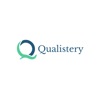The Software-as-a-Service (SaaS) cloud computing model enables a centrally-hosted, subscription-based software delivery and licensing model. In a typical SaaS offering, the cloud provider develops and hosts software products that they make available to end-users over the internet. While SaaS has become a standard delivery model for modern software applications, these models usually store and process personal client data.
Given the increasing importance of data privacy, federal agencies and industry regulatory bodies issue guidance and focused regulations on safeguarding sensitive data. Compliance management processes in SaaS ensure that SaaS products and environments adhere to general and industry-specific regulations.
This article delves into various aspects of a SaaS business to comply with regulatory bodies and compliance programs.
Software compliance Standards for SaaS Businesses
While the SaaS industry presents massive opportunities, the cloud is a gigantic, complex environment, with each product showing unique security challenges. In addition, SaaS products are usually subscription-based, so they must capture client data to access account services.
Various governments, disciplines, and organizations have crafted privacy laws and regulations to define security requirements for SaaS products. Achieving compliance implies that the SaaS organization meets these regulations, ensuring their applications and the underlying tech stack maintain appropriate privacy levels. Failure to comply with data regulations and policies in specific industries may result in lawsuits and heavy fines, reducing revenue and a ban on the product.
Why Implement SaaS Compliance?
Users of SaaS products are growing increasingly aware of how important it is for their data to be protected, making security compliance a priority. Some reasons to implement SaaS regulatory compliance include:
Enhanced data privacy
There are various privacy and security compliance frameworks, each with guidelines on implementing secure storage and access to data. Adequate compliance management ensures implementing these guidelines on the entire SaaS stack, assuring effective access controls for sensitive information.
Improved public relations
As SaaS applications process Personally-Identifying Information (PII), data breaches potentially harm a company’s reputation/public relations. Most users move away from SaaS service providers who do not enforce technical and physical safeguards for sensitive data, making regulatory compliance a market advantage.
Increased operational efficiency
SaaS companies use security tools that collect event and log data to achieve regulatory compliance. Besides ensuring data security, these tools also expose poorly stored assets and ineffective architecture. Development teams can use insights from this data to optimize the configuration and drive enhanced performance.
Manage security risks
SaaS compliance management also involves deploying tools that monitor data access and modifications, helping SaaS business teams to identify and remediate security risks.
Compliance Standards for SaaS Offerings
Common compliance frameworks for SaaS products include:
1. General Data Protection Regulation (GDPR) Standard
The European Union (EU) makes up a significant portion of the global internet market, making its residents a notable target for cloud service providers. The GDPR standard is one of the central standards regulating the handling of personal data for citizens in the EU. GDPR guidelines apply to any company or business associate that intends to market its products to residents of the EU, regardless of their location. The GDPR lists privacy and data protection requirements for its citizens in five categories:
- Requiring the user’s content for data processing
- Protecting the collected data by enforcing anonymity
- Alerting the subjects of any data breach
- Enabling physical safeguards for data in transit
- Appointment of a data protection officer to enforce compliance
Apart from the above five requirements, GDPR also offers a compliance checklist that loosely relates to the five categories listed above.
SaaS GDPR Compliance Checklist
To ensure compliance with GDPR guidelines, the SaaS organization or business associate should:
- Ensure the product’s privacy policy states how they intend to keep data safe
- Create a comprehensive cookie policy and use an updated cookie consent banner
- Provide a record of data flows/pipelines
- Verify the compliance of third-party integrations
- Implement technical safeguards for compliance
- Appoint a data protection officer
- Implement organizational and administrative safeguards for compliance
2. Payment Card Industry- Data Security Standard (PCI-DSS)
The PCI-DSS offers a set of security standards that assures a secure environment for all applications that process and store credit card information. PCI-DSS compliance requirements include:
- Use and maintenance of firewalls
- Enforce strong password policies
- Encryption of data in transit
- Using up-to-date software
- Restricting access to card data
- Unique IDs for each session
- Vulnerability scanning and testing
SaaS PCI-DSS Compliance Checklist
To ensure proper data handling outlined by PCI-DSS, merchant SaaS companies should:
- Research the provisions of PCI-DSS
- Determine their level of software compliance required
- Prepare a self-assessment questionnaire (SAQ)
- Secure the physical servers hosting the payment platform
- Examine and document the compliance of third-party software components
- Complete the SAQ and attain a compliance certificate
3. Health Insurance Portability and Accountability Act (HIPAA)
The HIPAA act prevents insurance companies and healthcare providers from disclosing sensitive Protected Health Information (PHI) without their consent. The HIPAA security rule outlines the following requirements for covered entities:
- Ensure availability, integrity, and confidentiality for all electronic client records in the healthcare industry
- Implement mitigations for anticipated threats to the security of PHI
- Prevent unauthorized usage and disclosures of PHI
- Certify compliance by the healthcare organization
SaaS HIPAA Compliance Checklist
The SaaS HIPAA compliance checklist includes:
- Scan for applications that contain electronic PHI records
- Review SaaS contacts for applications with ePHI
- Conduct continuous audits and reports
- Determine data breach alert protocols
4. Service Organization Control (SOC2) Standard
SOC2 is the default regulatory compliance framework for SaaS businesses that store and process their clients’ data on the cloud. The standard offers internal control reports for organizations that process information accessible to the public. SOC2 reports on an audit trail of the organization using trust services principles and criteria outlined by the Association of International Certified Professional Accountants (AICPA). SOC2 trust principles are categorized into:
- Security
- Availability
- Processing integrity
- Confidentiality
- Privacy
SaaS SOC2 Compliance Checklist
To enable SOC2 compliance, SaaS firms should:
- Define categories for usual and unexpected behavior
- Create alerts and notifications
- Keep a detailed audit trail
- Maintain a checklist of preventive actions
Steps to Achieve Comprehensive Regulatory Requirements
SaaS companies should first ensure their products are configured following their cloud platform’s security best practices. Other steps to help meet security and compliance requirements include:
Enable collaboration between development, operations, and compliance teams
Compliance teams should collaborate with human resources and IT teams to ensure that regulatory compliance is a shared goal. Collaboration provides organization-wide visibility of compliance risk, making QA activities easier to manage.
Educate stakeholders on the various regulatory standards
All staff members and company shareholders should understand the requirements of their industry’s regulatory frameworks. It enables the company personnel to analyze and assess why they store and process customer data, while stakeholders can stay on the right side of legislative requirements.
Set benchmarks and a code of conduct for compliance risk management
SaaS business teams should create and follow protection benchmarks such as the Centre for Internet Security (CIS) to safeguard data transit. Such groups should also establish a common code of conduct to ensure all actions in the organization align with the outlined protection policies.
Enforce continuous monitoring and logging
Event logging and performance monitoring enable QA teams to continually review how business operations adhere to the requirements set by the compliance standard. It ensures the SaaS product stays effective and compliant even with numerous changes over time.
Track changes in compliance frameworks
Governments and organizations are increasingly tightening controls over data processing due to the rising value of privacy. As a result, SaaS teams should stay updated on any changes to the security requirements and new policies enacted within their product’s jurisdiction.
Use a compliance management tool
A compliance management system is an integrated tool/framework to help businesses enforce compliance. These tools bring together multi-disciplinary compliance requirements under a typical ambit, facilitating collaboration, visibility, and compliance process automation.
Popular SaaS Compliance Management Tools
Some tools that help SaaS companies maintain compliance for their platforms include:
Crashtest Security – A popular vulnerability scanning security suite that helps QA teams detect and remediate security vulnerabilities before they are exploited to orchestrate data breaches. Crashtest Security eliminates security blind spots using quick security assessments that benchmark against the OWASP Top 10 to safeguard client data.
Namescan – As an integrated platform, Namescan enforces AML/CLF compliance standards to counter money-laundering and terror-financing transactions. It covers major global watchlists of fraudsters, comparing transactions against sanctions data to impose security measures stated by each jurisdiction.
Third-Party Manager – Developed by Diligent, the Third-Party Manager, systemizes the monitoring and onboarding of third-party integrations. The platform leverages a scalable model to implement an intuitive workflow that automates compliance processes to ensure the ethical conduct of SaaS vendors.
Intellect – Intellect is a popular Quality Management System (QMS) that offers a flexible platform to meet digital transformation goals while enforcing ISO and FDA compliance requirements. The no-code compliance solution provides custom dashboards with real-time metrics to enable better visibility and insights for compliance management.
Wdesk – Developed by Workiva, Wdesk is a cloud-based compliance management solution for large and mid-sized SaaS companies. The platform combines data from multiple sources to create reports based on historical context then automates compliance process management.
SaaS Compliance FAQs
Who is responsible for managing compliance in SaaS companies?
Compliance is a multi-disciplinary function that encompasses quality assurance, security, and operations. It is recommended that SaaS organizations appoint a data protection officer to coordinate efforts towards comprehensive compliance responsibilities.
What are the types of SaaS security controls?
Some commonly used mechanisms to enforce compliance in SaaS applications include:
- Identity and Access Management (IAM)
- Cloud data encryption
- Data loss prevention
- Vulnerability scanning/security threat detection
This article has already been published on https://crashtest-security.com/software-saas-compliance/ and has been authorized by Crashtest Security for a republish.







Top comments (0)